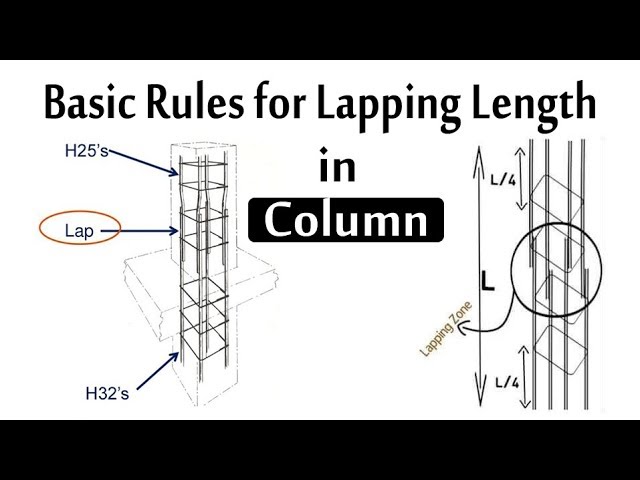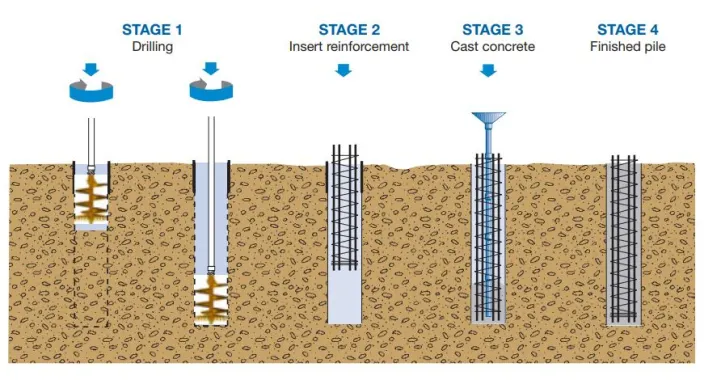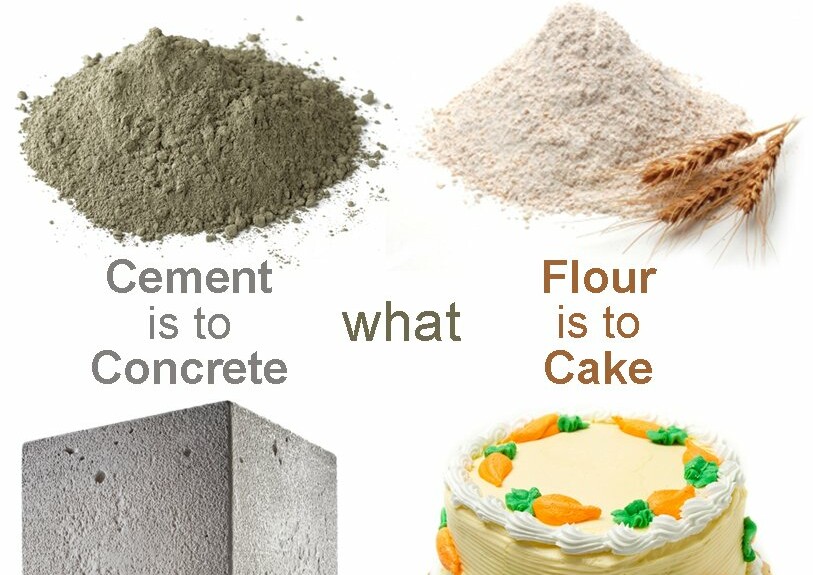Are you looking for a full guide to understanding the different types of roads constructed around the globe? Well, you are at the right place. Keep on scrolling!
The roads act as the pavements that help to reach your destination. It also acts as a bridge linkage between one place and another and a central line to survival. There are different types of roads constructed depending on the flow of traffic, speed, and other criteria.
In this blog, we’ll discuss all types of roads that help to connect two different places. As discussed above, roads are classified on different criteria that help engineers to understand more about them. We will discuss everything possible that will help you learn the types of roads and how can you can construct them. So, let’s get started.
Also read: 10 Different Types of Footings
Different Types of Roads
There are different types of roads as we discussed above. These types can be further divided based on different criteria which are the ones we mentioned below. We will discuss all these in detail later in the article. Have a look!
- Based on Speed and accessibility
- Based on Construction materials used
- Nagpur road Classification
- Based on usage
- Based on Carriageway
- Based on Rigidity
- Based on Topography
- Based on Economy
- Based on traffic volume
- Based on traffic type
Let’s discuss the above types of roads in detail below. Keep on moving.
Classification of the Roads Based on Different Criteria
The roads can be classified based on the different criteria which we will discuss below. This classification of roads can be further divided into the actual roads that we commute on. So, without further adieu, have a look at types of roads based on the different criteria that every engineer should know about.
1. Classification Based on Speed and Accessibility
Below are the types of roads that are constructed keeping speed and accessibility in mind. Have a look!
Collector Roads

Collector roads help to facilitate the traffic from arterials and Local streets. However, the speed limit ranges from 35-55km/h. Also, Pedestrians can cross the roads from any point of intersection. Parking is also allowed.
Freeways

Freeway highway is designed for fast-moving heavy-duty vehicles. The roads are for long-distance travelers with high speed. These roads are generally constructed in four lanes having two lanes in both directions. The movement of the traffic on the freeways is always continued. Besides this, the roads remain unhindered because there are no signals and no road intersections.
Moreover, the drivers do not interact with the opposing traffic flow. The roads are accessed through the ramps; only there are underpasses constructed for the passage of people and vehicles.
Interested in knowing more about highways. Read our complete guide on types of highways and how you can decide which one to construct where.
Local Streets

Local streets don’t have a large traffic volume, so the speed limit is only 30km/h on these kinds of streets. Moreover, the local streets help different access properties present around it. With this kind of road, people can reach the local markets and other streets.
Additionally, Pedestrians can cross the roads from any point. Loading, unrestricted parking, and unloading of the vehicles can be done through the streets. They don’t have any dividers; however, they can be divided by the 1m dotted straight white lines.
Highways

Highways connect cities to cities and villages to cities and two different states. The roads are known as national capitals and state capitals. The highways run through different lengths and widths across the country.
These roads generally have two lanes and are further classified into State Highways, Rural Highways, Urban Highways, and State Highways.
Arterials
Arterials are those forms of roads laid within the town or cities for the flow of high-volume traffic. These roads are the central lines of the businesses that move from residential complexes to business points.
The roads also give access to multiple highways, especially those present along the cities. Moreover, the pedestrians can also cross the intersection or pedestrian crossings. Signal systems are also helpful in controlling traffic at the point of intersection.
In some cases, cement is also used to make roads. Check our article mentioning major types of cement and their uses in construction.

These are the types of roads that are constructed based on two factors and those are speed and accessibility. Next, we will talk about roads based on construction material.
2. Roads Classification based on Construction Material
These are some of the roads classified based on the construction material. Keep on reading!
Earthen Roads

Earthen roads are made with the soil available on the construction sites. These roads are known as earthen roads and are relatively cheaper than other forms of roads. These roads are designed for handling low traffic volume.
The soil-based roads are laid with two to three layers of the soil. Also, the surface of the roads is highly compacted and needs a rammer for expelling the excess soil. The roads are temporary and not ideal during the rainy season.
Concrete Roads
Concrete roads are generally laid by using materials such as cement. This road type is often recommended to bear high traffic volume. However, the road requires curing and care. The average lifespan of such kinds of roads is nearly 40 years.
Bituminous Roads

During the evaporation of petrol, a black viscous and sticky compound called bituminous formed. Bituminous roads are widely utilized worldwide because they are simple to lay and give a smooth, even surface finish. The sub-grade soil at the location determines the thickness of the bituminous road. It is always suggested to install two layers of bitumen roadways.
Kankar Roads

Kankar is the impure stones obtained from Limestone. The roads are generally laid with limestones and are of poor quality. However, the roads are better than that gravel roads and earthen roads.
Water Bound Macadam Roads

The roads are WBM roads and are crushed using the base course. The material is laid in the form of layers. Furthermore, the aggregates will be spread on the soil’s surface, having a maximum thickness of 10 cm. Rollers give them a better finish, and these kinds of roads can bear heavy traffic.
Gravel Roads

Gravel roads are also among the cheapest roads but better than earthen roads. The form of roads has earthy material, and a mixture of gravel paved on the compacted surfaces. These are also known as metal roads and are easy to build. The roads are generally present in the villages.
Murram Roads

Murram roads are generally made with gravelly material obtained during igneous rock disintegration. The roads are constructed using the Murram material and have a relatively higher density than the gravel roads. This provides a smooth surface finish and can handle moderate traffic loads.
These are some of the types of roads based on construction material that you should know. Let’s move to the other section.
3. Classification Based on Nagpur Road Classification
The classification of the roads based on the Nagpur Road classification is as follows:
State Highways
The State Highways are generally connecting the cities and states. They also give you access to the national highways and connect neighboring states. The roads have two lanes; however, they are not divided by the strips of boulders.
District Roads

District roads give people access to the state’s highways from the local roads. It acts as the towns’ central line that connects them with the districts and states. The roads are also helpful in connecting neighbor roads. These roads are further classified into two different road types, which are as follows:
Major District Roads:- The roads help to connect district headquarters
Minor District Roads: This road helps connect major districts and towns to the district’s headquarters.
Village Roads

Village roads help to connect the towns and villages. It acts as the central line for the villages and gives them access to the cities and states.
National Highway

National highways run throughout the country with varying lengths and widths. These kinds of roads help connect national capitals, cities, and states. The roads generally have two lanes, one in each direction.
These lanes are divided through the boulders strip. Vehicles can run on the road with a minimum speed of 80km/h. These roads are generally labeled as NH1 to NH70.
3. Classification of the Roads Based on Rigidity
There are two forms of roads based on rigidity which are as follows:
Flexible Roads

The flexible roads ahs the outer layer of the bituminous, underlying sub-base, subgrade, and base course. The layer makes these roads pliable enough to handle traffic road. However, the roads may need periodic maintenance. If it doesn’t maintain properly, it may disintegrate quickly.
Rigid Roads

Rigid roads are composed of three layers: subgrade course, base, and surface course. This further makes the road rigid and non-pliable. Concrete roads generally come into this category of roads.
4. Classification of the Roads Based on Topography
Two forms of roads fall into the topography category. Let’s discuss these in the details below:
Hilly Roads

These are the form of roads constructed on the mountain or hilly areas having up and down with frequent steep bends. It takes more time to build such roads compared to the other form of roads.
Bridges are also constructed in hilly areas. Do check the list of types of bridges to get a further idea about the topic.
Plain Area Roads
These roads are usually constructed in plain regions with few bends. The roads can be built quickly and need planning to execute properly.
The other one is a really interesting classification that is based on how much traffic is received by the road. Let’s check!
Also read: 20 Different Types of Buildings
5. Classification of the Roads based on Traffic Volume
The roads under this category can be classified into three forms of roads. These types of roads are based on the traffic that the road can achieve in a single day. Have a look!
Low Traffic Roads

These are those forms of roads that receive less traffic, generally 400 vehicles per day. Village roads and city roads come under this kind of road.
Medium Traffic Roads

The roads are often busy and receive 400-1000 vehicles daily. District roads are a common example of such kinds of roads.
High Traffic Roads

The roads can carry near around 1000 vehicles. These roads are known as high-traffic roads. State highways and national highways come into this kind of category.
FAQs
-
What are different types of roads based on construction material?
Cement or concrete roads, gravel roads, water-bound macadam roads, bitumen roads, earthen roads, etc.
-
What are the four common types of roads?
Local streets, national highways, collector streets, and expressways.
-
How many layers are present in rigid and flexible pavement roads?
Rigid pavement consists of three layers, and flexible pavement roads have four layers.
-
What do you mean by WBM roads?
The roads are also known as Water Bound Macadam roads made with crushed stones and laid in the form of layers. The roads are aggregated on the surface, having a thickness of 10 cm.
Types of Roads: Bottom Line
So, these are some of the best types of roads constructed across the globe. The roads are generally constructed based on the requirement and severity of the traffic control.
Now you know different types of roads and which areas the roads can be constructed. You can use the knowledge to construct different forms of roads.
If you know any other types of roads that you think can be mentioned in the article, please let us know in the comments section below. However, we have tried to include every type of road that is being constructed all around the world.





